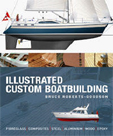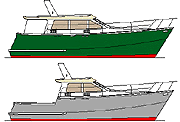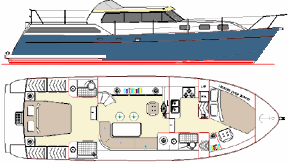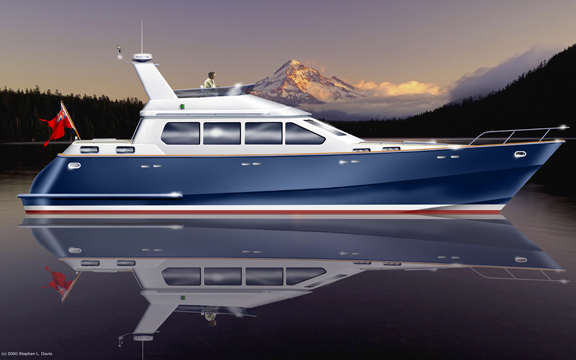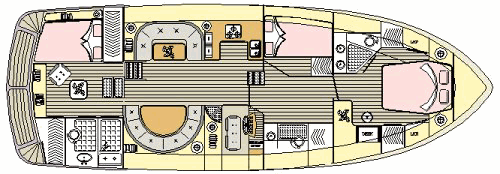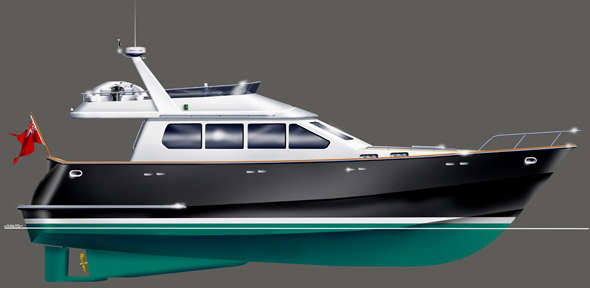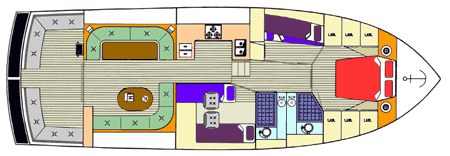|
PASSAGEMAKER magazine January / February
issue 2000 ... article about Cruising in Europe
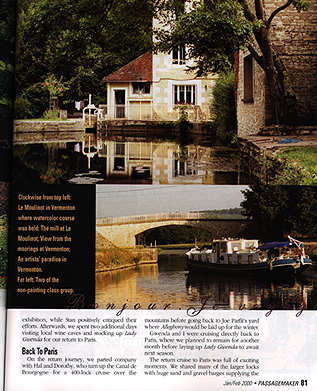
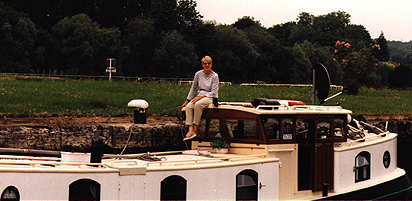
Dorothy Stufft on 'Allegheny'
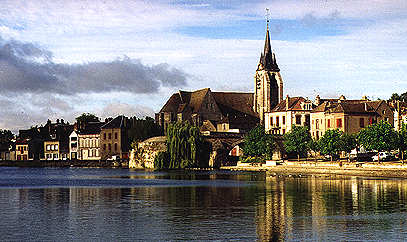
The beautiful village of Pont sur Yonne
Photos by 'Gwenda'
Just one of the 18 pages in PASSAGEMAKER that is devoted
to cruising in Europe. The 5,000 word text will wet your appetite and the many photographs
show the beautiful French waterways and countryside.
Cruising in Europe
... An overview:
A very short extract from Bruce's
book "CHOOSING FOR CRUISING"
In
the case of Holland paperwork is kept to a minimum. For boats of under 49 ft 3 in (15m)
in length, and whose top speed is less than 8 knots (20 km), all that is required is a
recognized form of operators certificate such as the
certificate of Competence issued in the UK by the RYA. As with any cruise you may be planning the requirements may
change so you should always check with the local authorities of each country you plan to
visit. Make sure you are equipped with the correct ships papers and local guides and rule
books before you leave your home port. In Holland you are required to purchase a copy of
the Dutch ANWB strip maps, and although the text is in Dutch, they will prove most useful.
As
some of the locks (sluizen) are muti chamber
affairs it is essential to have a VHF radio available to call up and ask advice as to
which is the next available lock. Make sure you let the lock keeper know if you are
travelling upstream or downstream.
On
arrival in Belgium, you have to pay 35 Belgian francs (about 75P or US$1.20) for using the
canal system. The modest fee is offset by the fact that one of the crew will have to climb up to the office at every lock to have
the 35BF piece of paper stamped and recorded in the computer or occasionally entered into
a log by hand.
Before
crossing into France you can take the last opportunity to fuel up with the tax free and
therefore much cheaper Belgian diesel fuel. On crossing the border you are now able to use
the excellent French Navicarte maps which have English, French and German text; the
various editions cover the entire French canal system.
It
is a requirement to purchase a Vignette, the
French permit to travel on their canal system. At this lock leaflets explaining the
various permits are available in English, Dutch and German. There are different options
such as a 20 day pass designed for holiday
makers and must be used on 20 consecutive days, a 30 day pass, which can be used as you
wish, you do not count the days you are not actually travelling on the canals, or a one
year pass for those who plan to be on the move for more than 30 days.
The
locks on the Rhone are the largest in France and the Ecluse Bollene is over 80 ft deep
(24.40 m) and large enough to take most ocean liners. It is advisable to call the Rhone
locks on your VHF radio to advise of your impending arrival; this can save you up to two
hours delay if you just miss the lock cycle. With a few phrases spoken in French you will
greatly enhance the chances of the lock master holding the cycle for up to 20 minutes or
more, on occasions when others are already in the chamber. The right time to call ahead
depends on your speed. If you call from too far out you may be holding up the lock for too
long and annoy the lock keeper (not recommended). Most canal users find that calling when
about 10 to 20 minutes from the estimated arrival time is correct. If the lock-keeper does
not reply leave it for a few minutes and try again, he may be handling a lock full of
barges and be unable to get to the radio. You must supply the correct information in
French if you want this useful system to work in your favor.
If
you have the time, take your time as there is much to see and enjoy. You can easily travel
from Holland, Belgium or from one of the French channel ports to the Mediterranean in 18
days ; a leisurely trip through France can take a whole Summer.
|
![Bruce[2].jpg (4158 bytes)](images/Bruce[2].jpg)
